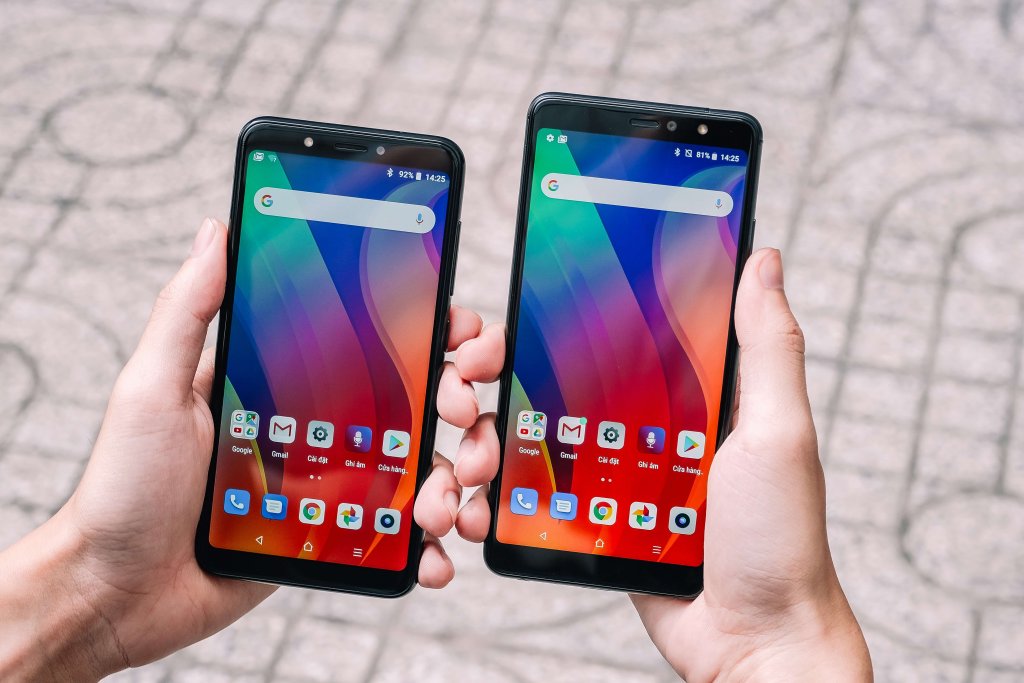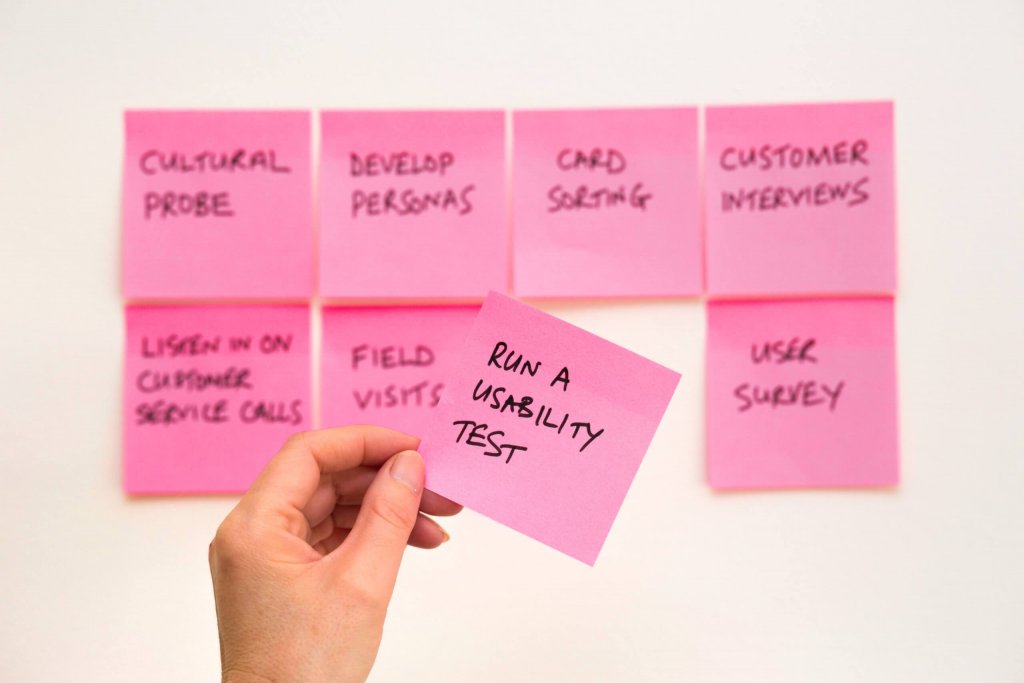Building an app is not a complicated affair if done the right way and for the right reasons. If you want to get into mobile app development only because everyone else is doing it, then you are bound to fail. On the other hand, if you identify a problem and try to offer a solution for it, the probability of success is much higher. For example, apps like Uber, OLX and Snapchat were all born out of a need for convenience in life. Uber made ride-sharing and hailing easier, and OLX makes selling everyday household goods easier.
Nonetheless, the critical part is to make a plan and then stick to that plan in app development. If you’ve done your research, developed a strategy and made sure to execute mobile app prototyping, there is no reason why you should not be successful. On that note, here, you will find a guide that outlines how you should go about developing a mobile app with a particular focus on building the right feature set.

Get an Idea and Set your Goals
As discussed earlier, app ideas can come from just about anywhere and a wide variety of situations. Maybe you or someone you know needs help with daily tasks, maybe your friends are looking for something that you can all enjoy together and is new in the market. If that doesn’t make any sense to you, look for the next step in existing concepts that could use a makeover or a fresh start.
Sometimes existing websites could use a mobile app version to ease access to it. If you can source your ideas from the places discussed above, chances are you will end up with a highly marketable product or business (or part of one). Therefore, just like in any situation, project or business, establishing goals requires an analytical overview of the subject.

Your Target Audience
Once you have your idea, it is equally important to be clear about the sort of individuals and communities alike will be using your app? You will need to answer questions like what demographics will the app serve? How will it gain awareness amongst the target audience? What’s the process to convert potential users? And how will you nurture users to keep them engaged?
Any mobile app development is bound to fail if you do not consider how your target audience and the app you developed will interact. For example, you can get away with small text and busy display with younger audiences. An older user, on the other hand, might prefer a more static screen with the ability to zoom in and out both text and graphics quickly.

Choosing a Platform
At the rate technology advances every day; we now live in a world overflowing with more possibilities than ever before. Potential options inundate the market for any idea, no matter how far-fetched. Similarly, mobile app development platforms are numerous and varying, which means there will always be something out there that suits your needs. It doesn’t matter if you’re making a mobile, desktop, or web application, you will find platforms with many different structures and technologies on which to write your code.
Native Applications (iOS, android etc.)
- Native apps are easy to integrate with the intended device and therefore, usually give better performance than other apps.
- Unless your app is cloud-based, you do not need an internet connection for operating the app, and therefore, it can be accessed anywhere anytime.
- Furthermore, it is far easier for potential users to discover your app since it is available in app stores native to that platform.
Web Applications (browser-based)
- Web app development is relatively simple, and the best option if the time to market is critical for your decision.
- Web apps require less planning, less architecting, less development, fewer costs, and can be ready in a matter of days.
- If you want to continue developing your app as an ongoing project, a web app might be the best option. Unless there are significant structural changes, the user does not need to update the app manually. They will be updated to the latest version whenever they access the app.
Cross-Platform Application
- Cross-platform app development can be a little tricky, but it will give you the most effective results.
- Code is shareable between platforms in this case, and therefore, the number of developers needed for the cross-platform app development is reduced.
- The app will stay consistent regardless of the platform on which it is used. i.e. both apple and android version will operate in much the same way
Assemble vs Build
Sometimes building an installable desktop app is the best solution for your requirements. You start from a blank slate and construct your application with incredible flexibility. Unfortunately, this can be time-consuming and has the highest risk factor for human error.
On the other hand, there are many development companies today that specialise in the development of one particular aspect of an application. By assembling these services instead, you’ll achieve quicker development times and responsibility to deliver falls to the service provider.
Platform as a Service (PaaS)
Instead of collecting individual services from many different vendors and assembling them, you can use a PaaS company for an all-in-one solution. These companies have already taken care of the heavy lifting in terms of collecting, organising, coordinating and hosting so that you have a ready foundation and tools available.
Low Code
Low code platforms revolve around the idea of using a visual designer to map and organise all aspects of the development process from data entities to the user interface. When you’re ready, your visuals are converted to code in the back and then deployed automatically into a CI/CD pipeline

Creating value with a great feature set
A feature set is a comprehensive description of the different functionalities that you want to incorporate in your app. It is the minimum amount of information necessary that justifies why any particular feature is needed as well as why it is not to solve a problem. Most developers would recommend you spend time on this before moving to the mobile app prototyping phase.
For example, let’s say your customer wants a way to check the weather on their phone. In this case, the apparent thing to do is build a weather app, but what is not clear is the specific functionalities that will need to go into the app. To solve the customer’s problem, your app must include viewing daily forecasts, temperature, humidity and precipitation levels etc. Since people mostly want to check the weather in their current location, integrating GPS is probably a good idea.
Therefore, a feature set should not be limited to a simple list of features that you or your customer think would look cool but may be irrelevant. Each addition to the feature set must be backed by the same hypothesis you established going into the app development project. You have to ask yourself, does this feature solve a problem or add value in any way to the end-user? If the answer is no, rework the feature idea until you are sure that it is something that the client can use.
In the end, it is all about altering people’s lives in a way where they will feel more motivated to use your app instead of the competition. You have to effectively offer a product or service that makes people want to switch and then stay.
Practical Points to Remember
Developing a feature set without the user interface in mind is usually a better idea unless the interaction method is absolutely essential to the proper function of your app. For example, Tinder relies heavily on the swipe feature and so was developed with that in mind. But if your wireframe consists mostly of information input and output, then focusing on functionality is the way to go.
Secondly, the information architecture of your app needs to be defined clearly. In doing so, you give a visual structure to the way information will flow through the app and to the user. This provides a good understanding of how big, or small, the app is and helps people understand exactly what features the app contains. It also answers the all-important question of how the user navigates through the system.

Aligning Marketing with Feature Development
Have the marketing department join in on the conversation and suggest changes and tweaks that might help improve the marketability of the app in question. You might gain insight into a feature that is more appealing to the customer and will, therefore, set you apart from the competition.
Furthermore, before you launch the final app, make sure all persons concerned with the marketing of the app are aware of the functionality as well as the pros and cons of its use. Regardless of whether they interact directly with customers or not, all employees should understand the new features and how to use it. Only then will they feel comfortable and excited enough to promote it to customers.

Testing and Validating
Gathering feedback is a must throughout the building process. It is ideal if you can bring in actual live users from your target audience to test the usability of the app early on in the mobile app prototyping phase. Getting first-hand input, especially when establishing the feature set will mean fewer changes later on.
Once you define the Minimum Viable Product (MVP), you should take your time to test and validate the features and architecture thoroughly. Always conduct additional testing and check and double-check the functionality of each aspect. Then gather more feedback on MVP version 1.0, implement the changes (if any) and re-launch as MVP 2.0. Once satisfied with the results, you can launch the product and watch the magic happen. Keep in mind; there will always be room for improvement because technology is frequently changing.

Conclusion
Sketching out the feature set as the core of the app development process is an excellent way to start the to the slow and steady process that is mobile app development, implementation and review. Going from idea to app can be a daunting task filled with both hurdles and joys. And yet it is the exciting potential of building any solution that drives so many to battle against unreachable expectations. To navigate around limitations for your feature set, and make countless revisions to your app wireframe just so that maybe someday it can be a solution for someone somewhere.
In the end, you’ve finally established a feature set that has persevered trial after trial, change after the change— and as you continue developing a solution for your target user base, you will come to value all the time and effort you put into reaching your goals and launching your idea as an app.
